38 how to read fats on food labels
Nutrition rating stars set to appear soon on food pack labels The Food Safety and Standards Authority of India (FSSAI), the country's apex food regulator, has released draft notification for front-of-pack labelling to discourage consumers from buying packaged food high in sugar, salt, and fat, which will require pre-packaged food to carry a star graphic — ranging for 0 to 5 — next to the brand name. How Much Protein Should I eat to Lose Weight? When choosing a protein supplement, be sure to read the label to make sure that it meets your dietary needs. For example, if you are vegan or vegetarian, be sure to choose a supplement that is vegan-friendly. It is also important to drink plenty of water when taking protein supplements, as they can be dehydrating.
Obesity in children: Paediatricians bat for nutrient-specific labels on ... For example, a food item is considered healthy when it has around 2,000 calories, two grams of sodium or five grams of salt, less than 5-10% RDA for sugars and less than 10% RDA for saturated fat....

How to read fats on food labels
How to read nutrition labels | Roswell Park Comprehensive Cancer Center ... A general guideline when looking at percent daily values is that if a serving of food provides 5% DV or less of a nutrient, that food is considered low in that nutrient. If a serving of food provides 20% DV or more of a nutrient, that food is considered high in that nutrient. Footnote, The footnote is used to help explain the Percent Daily Values. › topics › whats-foodFats | Nutrition.gov HHS, Food and Drug Administration, Center for Food Safety and Applied Nutrition Read about monounsaturated and polyunsaturated fats - what they are, where they are found, what they do, and how to use the Nutrition Facts Label to replace saturated fat with mono and polyunsaturated fats. Nutrition Facts Label - IFT.org - Institute of Food Technologists The Nutrition Facts Label, also referred to as the Nutrition Facts Panel, on packaged food and beverage products is intended to help consumers make informed food choices that contribute to a healthy diet. The first Nutrition Facts Label regulations were published in 1993 and launched in 1994.
How to read fats on food labels. 4 High-Protein Snacks To Leave on Grocery Store Shelves Right Now Balance Peanut Butter Nutrition Bar. Courtesy of Amazon. PER 1 BAR: 200 calories, 7 g fat (3 g saturated fat), 0 mg cholesterol, 170 mg sodium, 21 g carbs (<1 g fiber, 17 g sugar), 15 g protein. Protein bars are a convenient way to get your protein boost on the go. Nothing is easier to toss in your bag for those busy days—and it's a better ... How do use nutrition intelligence to understand food labels? • Tell how much energy is in the food, • The calories listed are for one serving of the food, Total Fat, • It is the amount of fat found in one serving of food, • Total fat includes the amount of "bad fats" (saturated and trans) and, "good fats" (monounsaturated and polyunsaturated) • Fat is higher in calories than protein or carbohydrates, All Diet & Nutrition Articles | Everyday Health Nutrition, Health Benefits, Risks, and Types. Grapes contain antioxidants, vitamin C, potassium, and vitamin K. They may help prevent type 2 diabetes and lower blood pressure, but their other ... dtc.ucsf.edu › learning-to-read-labelsLearning To Read Labels :: Diabetes Education Online On a nutrition food label, subtract the fiber from the total carbohydrate amount. When you read food labels, the grams of sugar are already included in the total carbohydrate amount, so you do not need to count this sugar amount separately. The grams of sugar listed include both natural sugars, from fruit or milk, and added sugars.
Step 3: Learn How to Read a Nutrition Label - ramfitness Eating too much fat, saturated fat, trans fat, cholesterol, and sodium may increase your risk of certain chronic diseases like heart diseases, cancer, and high blood pressure. Note: Good fats like Monounsaturated and Polyunsaturated fats will also be listed in this area, but they are good heart-healthy fats. What's High and What's Low, en.wikipedia.org › wiki › Food_energyFood energy - Wikipedia Many governments require food manufacturers to label the energy content of their products, to help consumers control their energy intake. To facilitate evaluation by consumers, food energy values (and other nutritional properties) in package labels or tables are often quoted for convenient amounts of the food, rather than per gram or kilogram; such as in "calories per serving" or "kcal per 100 ... 22 Foods High in Trans Fat You Should Avoid | New Health Advisor Most brands have less than 0.5 grams per serving but you should still check the labels to find the one that has the least. Breakfast Sandwiches: Many breakfast sandwiches use biscuits, butter and trans fats rich meats such as bacon which means that your breakfast sandwich can have as much as 6 grams! How to read nutrition labels - Roswell Park Comprehensive Cancer Center ... Carbohydrates, fat and protein are all sources of calories in food. Remember, the number of calories you consume is based on how much of the product you actually eat. In this example label, 1 serving or ⅔ of a cup of this food provides 230 calories. If you consume two servings, the number of calories provided by the food you eat would be 460 ...
Why it's important to add nutrition labels to your recipes Don't worry about having to manually calculate calories, fats, proteins, etc. No need to use a fitness app and transfer the data over to your blog. Nutrifox will automatically calculate all of the nutrition facts based on the servings and ingredient amounts you include on your recipe card. It's literally as simple as the click of a button! The takeaway food that could hike risk of heart disease Although not all of the kebabs in the study had a saturated fat level as high as 27.9 grams, 85 percent of them had at least 5 grams of saturated fat. READ MORE: Drinking tea reduces diabetes risk ... › en › healthy-livingUnderstanding Ingredients on Food Labels | American Heart ... Mar 06, 2017 · There are many terms used for sugar on food labels. You might see sugar listed as the fourth ingredient in a product and think it’s not so bad. But sugar can also be listed as high-fructose corn syrup or corn syrup, agave nectar, barley malt syrup or dehydrated cane juice, to name just a few. Read more about sugar and sweeteners. Find a Healthy Cooking Oil - Consumer Reports Walnut. 56 cents per oz. for 16 oz. High in unsaturated fats and low in saturated fat, walnut oil is also a good source of alpha-linolenic acid (ALA), a type of omega-3 fatty acid found in plants ...
Nestlé Cereals raises red flag over traffic light labelling confusion "It is concerning that our research shows many consumers do not understand how to interpret the nutritional labelling information. That's why, as part of our 'no red's' campaign, we've updated our website with some useful resources where consumers can find out more information about the nutritional traffic light labelling system," Baker said.
Foods High in Purines Chart | New Health Advisor While you can enjoy most of the fruits and veggies, be sure to have no more than two servings per week of mushrooms, spinach, cauliflower, and asparagus. 3. Grains and Starches. Grains can also be part of your low-purine diet. You can enjoy pasta, bread, rice, and cereal along with starchy veggies, such as winter squash and potatoes.
More than just a number: The science behind nutrition labels In every gram of carbohydrates and proteins, there are four calories — in fats there are nine, Olson said. Of these nutrients, 50-60% of our calorie intake daily should come from carbohydrates, 10-25% from proteins and 30-35% from fats, LaRowe said.
Food Labels Remain a Sticking Point - TraceGains This month, a U.S. District Court ruled against the U.S. Department of Agriculture's decision to allow brands to label genetically engineered foods with just a QR code. The USDA must also include additional disclosure options under the agency's Bioengineered Food Disclosure Standard. "The court has now confirmed that the USDA acted ...
Is Peanut Butter Really Healthy? It Depends - cnbctv18.com "When you read the label, the first ingredient should be peanuts. Some brands are misleading, because they say it is peanut butter but it is never the first ingredient. Make sure that at least 70-80 percent of the peanut butter is made up by nuts.
Habits Secretly Increasing Your Cholesterol — Eat This Not That If you want to improve your lipid profile, replace saturated and trans fats with monounsaturated and polyunsaturated fats. Good sources include olives, avocados, nuts, seeds, olive oil, and canola oil. Eating walnuts, flaxseeds, and fatty types of fish can help raise your HDL. Cut all added sugar and sweetened beverages from your diet.
Reading Food Label Worksheet - Edu Stiemars This could be very helpful in case you have a food allergy or intolerance and need to keep away from sure meals. Teach children about one of the stops alongside the Food to Table chain. Cards accompanying the front of pack diet labeling worksheet. Step 2: Look At The Energy, A worksheet looking at front of pack vitamin labeling.
› how-to-read-a-dog-food-labelHow to Read a Dog Food Label – American Kennel Club Nov 30, 2020 · All pet food labels follow roughly the same format: Product and brand name or unique identifier. Quantity in terms of product weight, liquid measure, or count, depending on the formulation of the ...
› how-to-read-food-labelsHow to read food labels | healthdirect Energy: A kilojoule is a measure of energy. To lose weight, you need to eat and drink fewer kilojoules (kJ) than you use. You should limit your intake of discretionary or junk foods — i.e. those that have more than 600kJ per serve.
Hypertension: 9 Kinds of food to avoid in high blood pressure Food items rich in saturated fats include, Desserts, like chocolate, candies, cakes, cookies, Processed meat, like sausages, bacon, Cooking fats, like butter, lard, ghee, goose fat, and other...
› hub › importance-ofThe Importance of Food Labels | Requirements for Packaging Sep 07, 2018 · Your pre-packaged food must include the following on its labels: The name of the food. This must be a true representation of your product and must not be false or misleading. A list of ingredients. You must use ‘Ingredients’ as the heading and list the ingredients used to make the product in descending order of weight.
How to Identify Gluten on Food Labels - Verywell Health According to the rule, manufacturers must ensure that their products contain less than 20 parts per million (ppm) of gluten in order to carry the "gluten-free" label. 1. Some gluten-free advocates insist that the FDA standard is inadequate and that symptoms can develop at 10 ppm and lower.
Food Labeling Requirements - TheMarketatdelval.com On all nutrition labels, you will see a daily value percentage (per cent DV) for fat, saturated and trans fat, sodium, carbohydrate, fiber, vitamin A, vitamin C, calcium, and iron. The Daily Values (DV) or average recommended daily intakes for people aged two and up are used to calculate these percentages.
How to Make Cream Puffs {Choux Pastry} | Tastes of Lizzy T Place a ½ round piping tip in a piping bag. Fill the bag with the pastry dough. On the prepared pan, pipe 28 circles of batter, about 2" in diameter and ¾ to 1" tall. Try to make the puffs as even as possible. Dampen your finger and smooth out any peaks that may have formed.
12 Healthy High-Fat Foods You Should Eat On a nutrition label, look for the words "polyunsaturated fats" and "monounsaturated fats." Saturated fat: Solid at room temperature and found in animal foods, like meat and butter, as well as ...
Healthy Eating at Work : OSH Answers - Canadian Centre for Occupational ... Eat plenty of vegetables and fruits, whole grain foods and protein foods. Choose protein foods that come from plants more often. Choose foods with healthy fats instead of saturated fat. Limit highly processed foods. If you choose these foods, eat them less often and in small amounts.
How to Read Misleading Food Labels - Athletic Healthcare "Low fat" means a product has no more than 3 grams per serving; "reduced fat" means a food has at least 25 percent less fat than its regular counterpart. Similar regulations govern advertising of lower saturated-fat, cholesterol, and calorie content, as well as terms like "lean.",
Nutrition Facts Label - IFT.org - Institute of Food Technologists The Nutrition Facts Label, also referred to as the Nutrition Facts Panel, on packaged food and beverage products is intended to help consumers make informed food choices that contribute to a healthy diet. The first Nutrition Facts Label regulations were published in 1993 and launched in 1994.
› topics › whats-foodFats | Nutrition.gov HHS, Food and Drug Administration, Center for Food Safety and Applied Nutrition Read about monounsaturated and polyunsaturated fats - what they are, where they are found, what they do, and how to use the Nutrition Facts Label to replace saturated fat with mono and polyunsaturated fats.
How to read nutrition labels | Roswell Park Comprehensive Cancer Center ... A general guideline when looking at percent daily values is that if a serving of food provides 5% DV or less of a nutrient, that food is considered low in that nutrient. If a serving of food provides 20% DV or more of a nutrient, that food is considered high in that nutrient. Footnote, The footnote is used to help explain the Percent Daily Values.


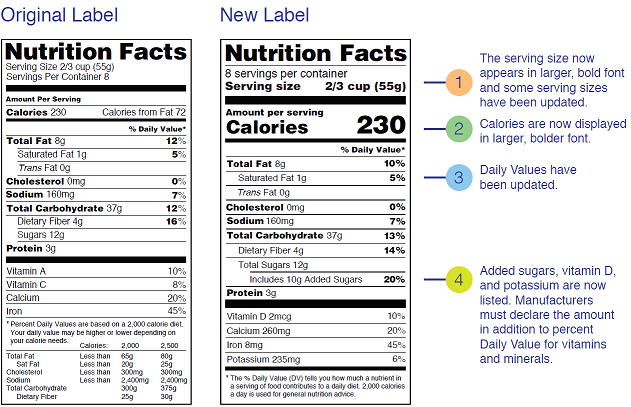
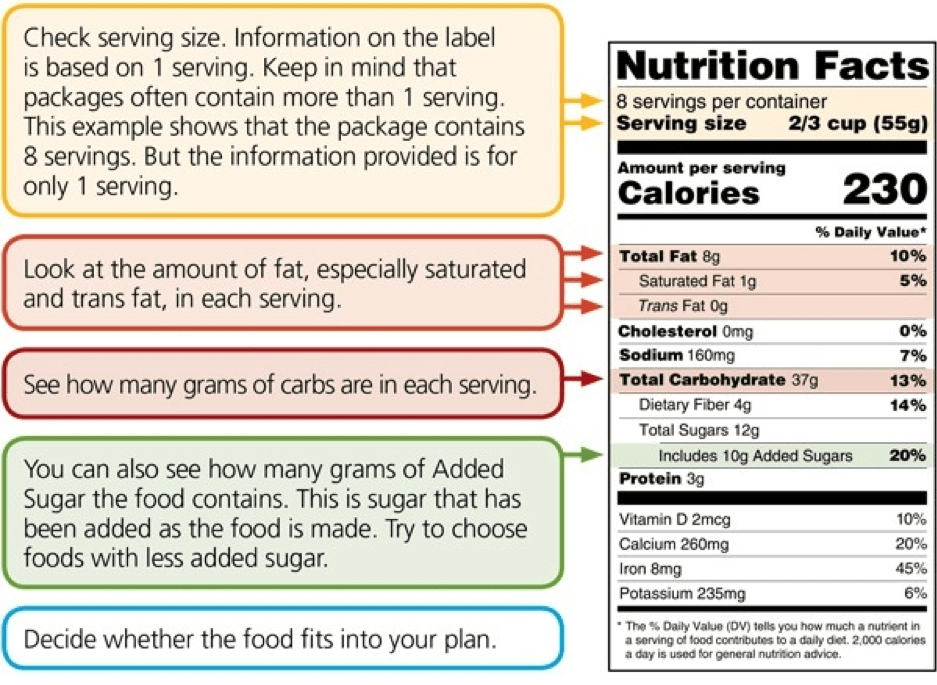

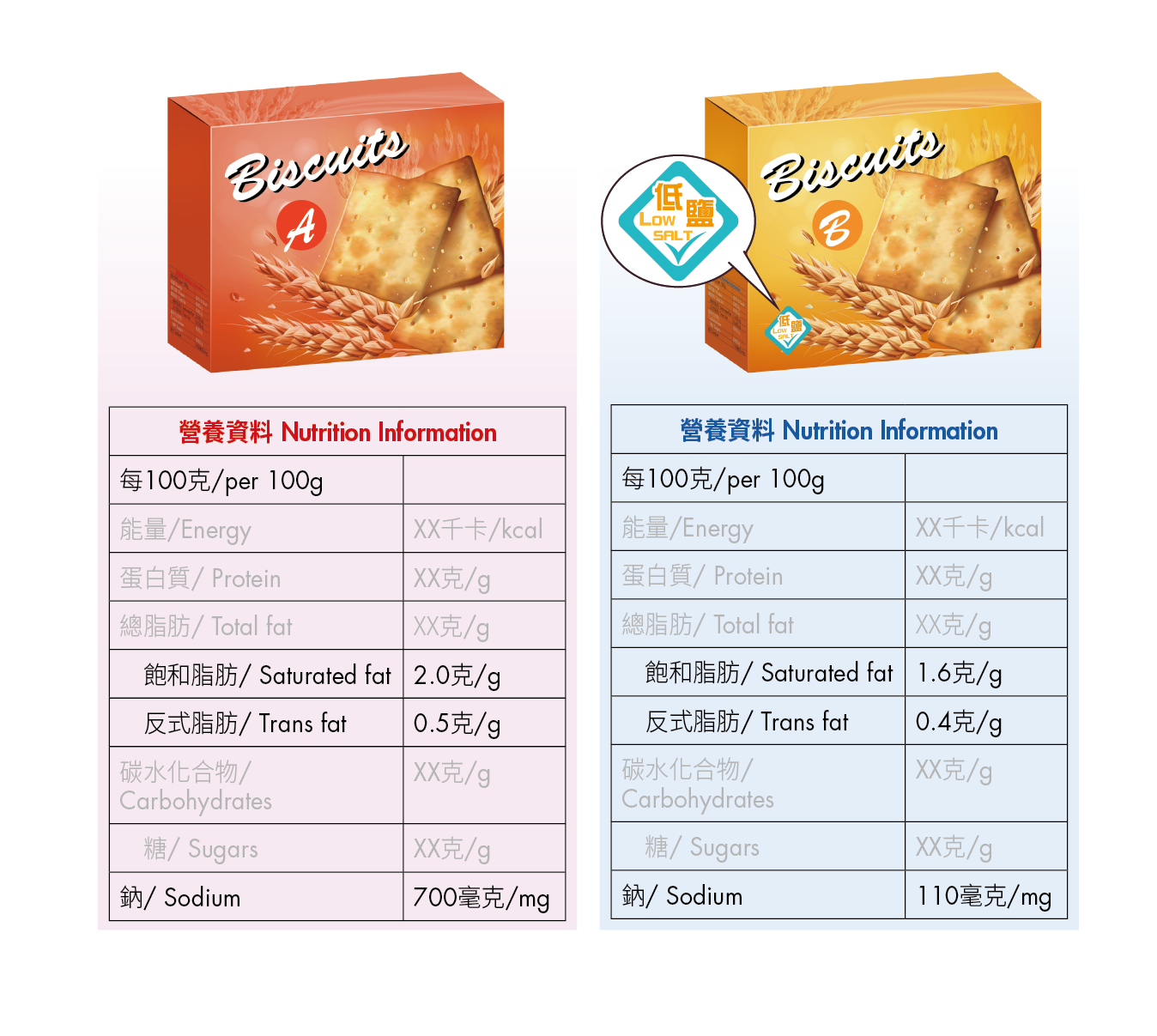



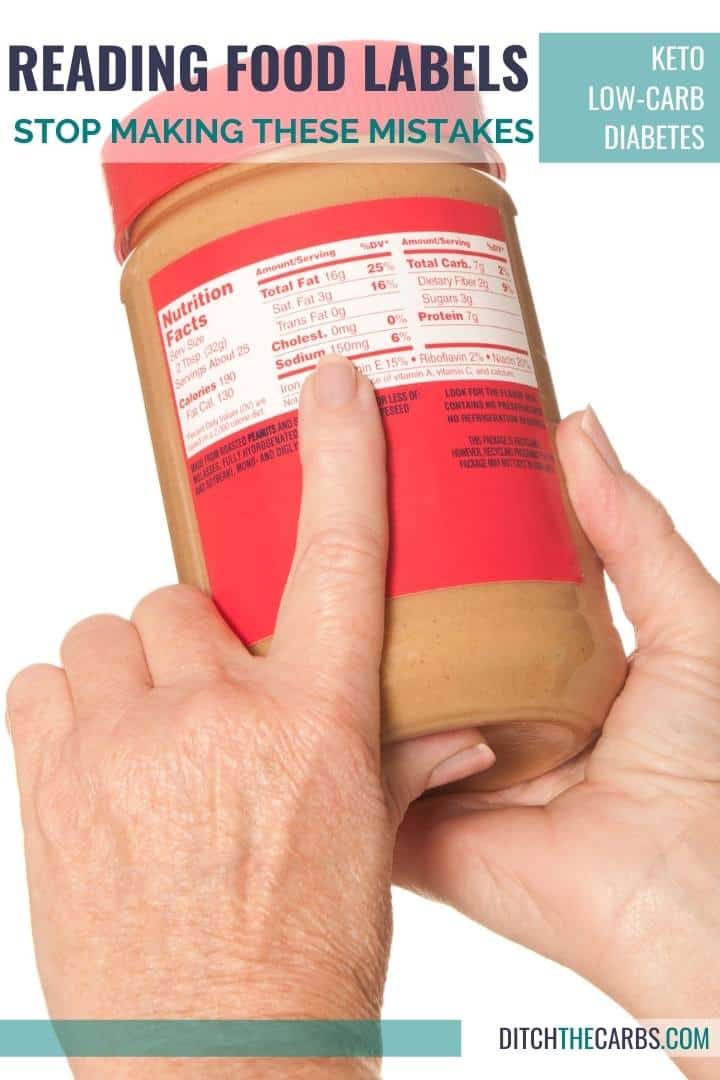

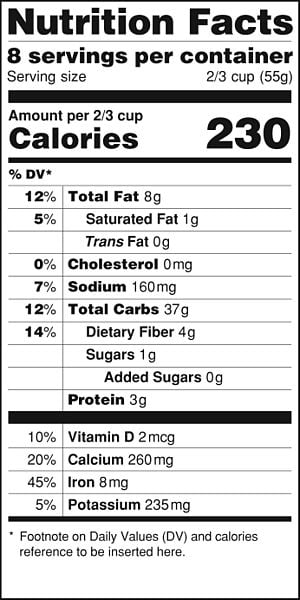
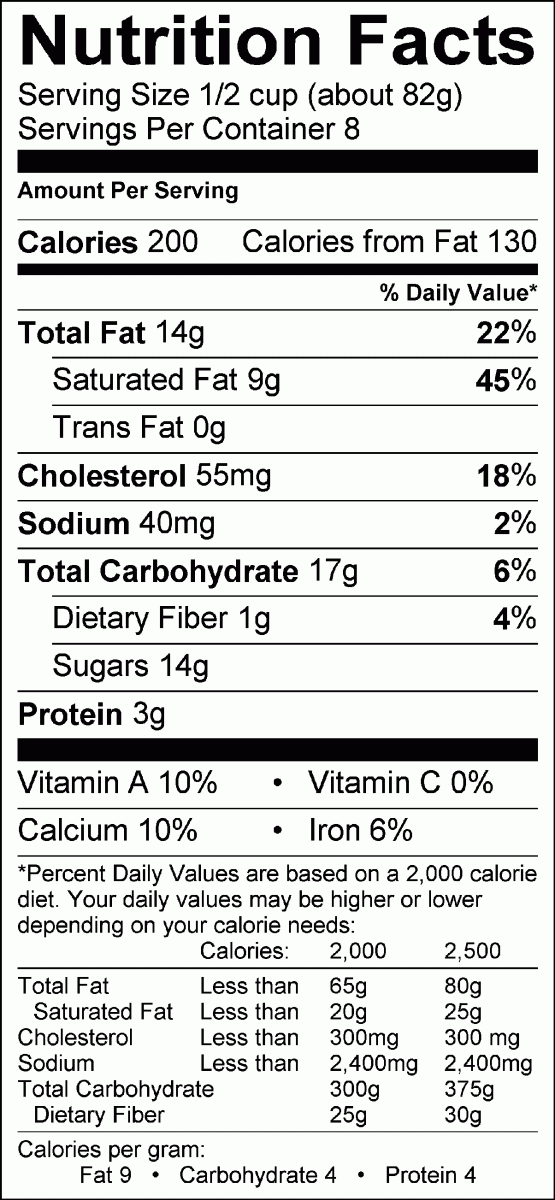

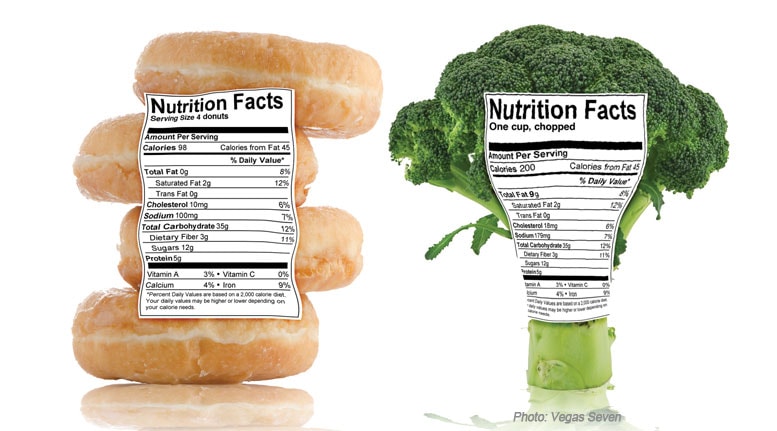

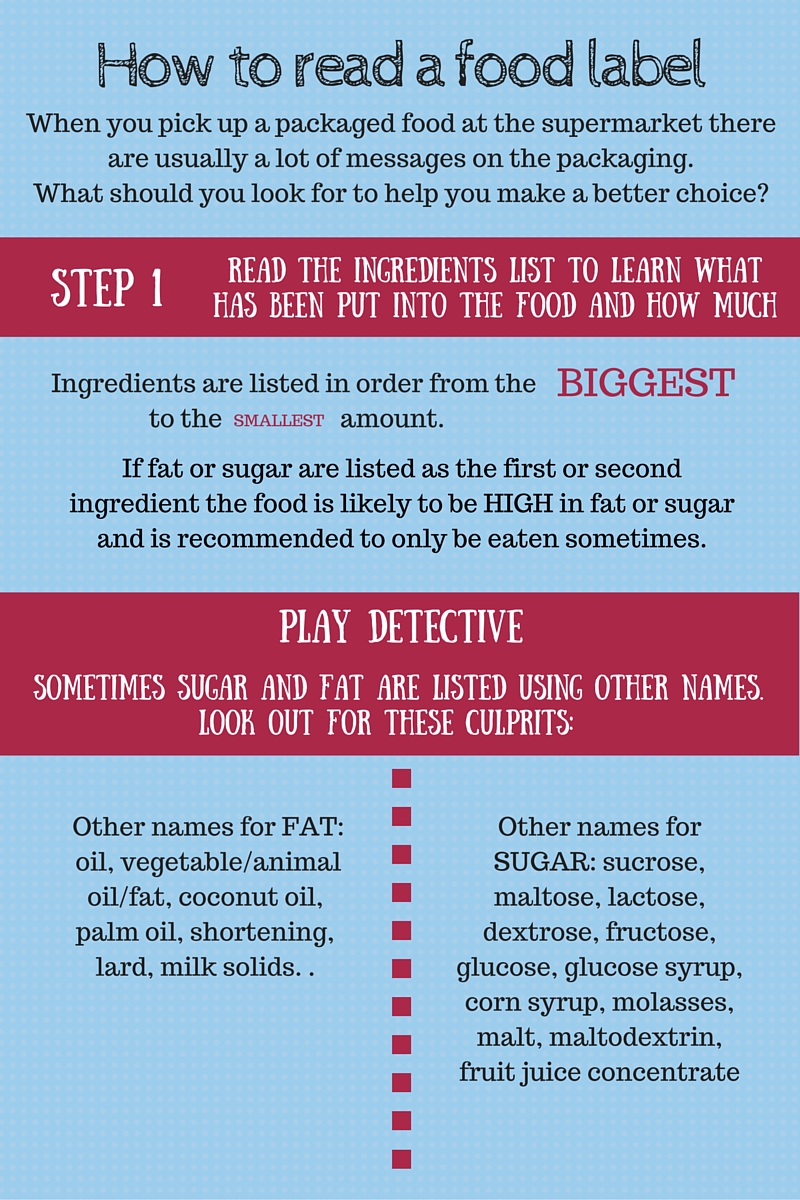

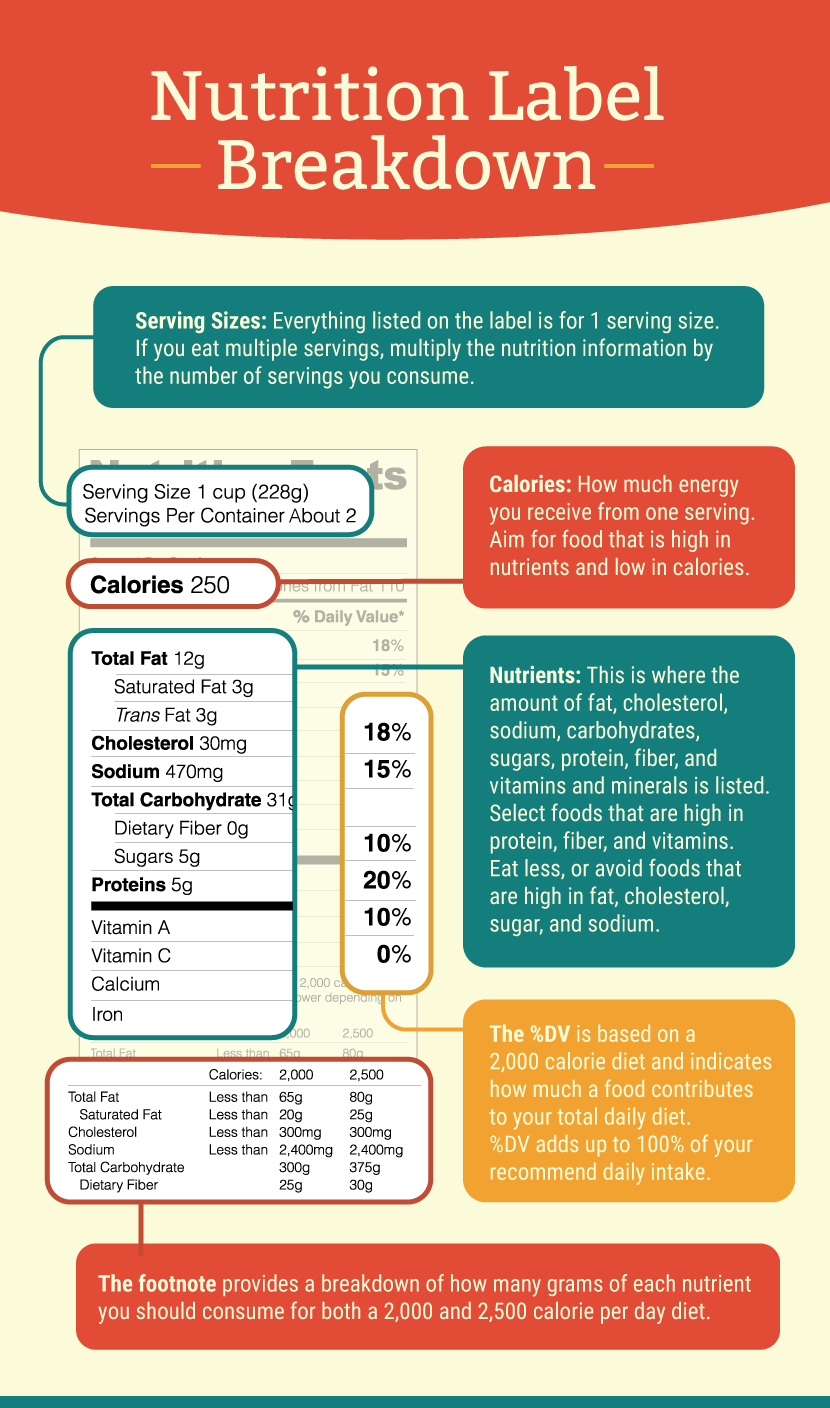






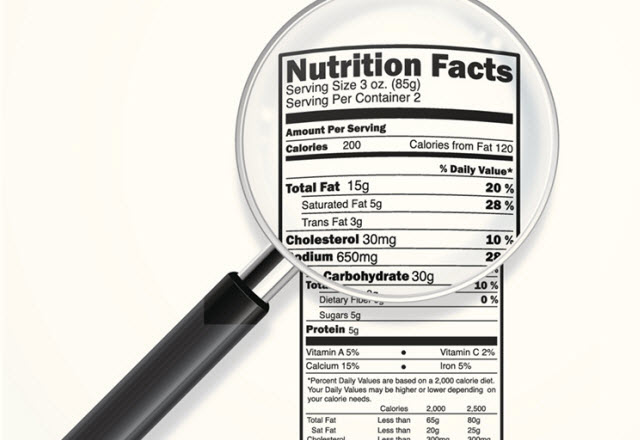
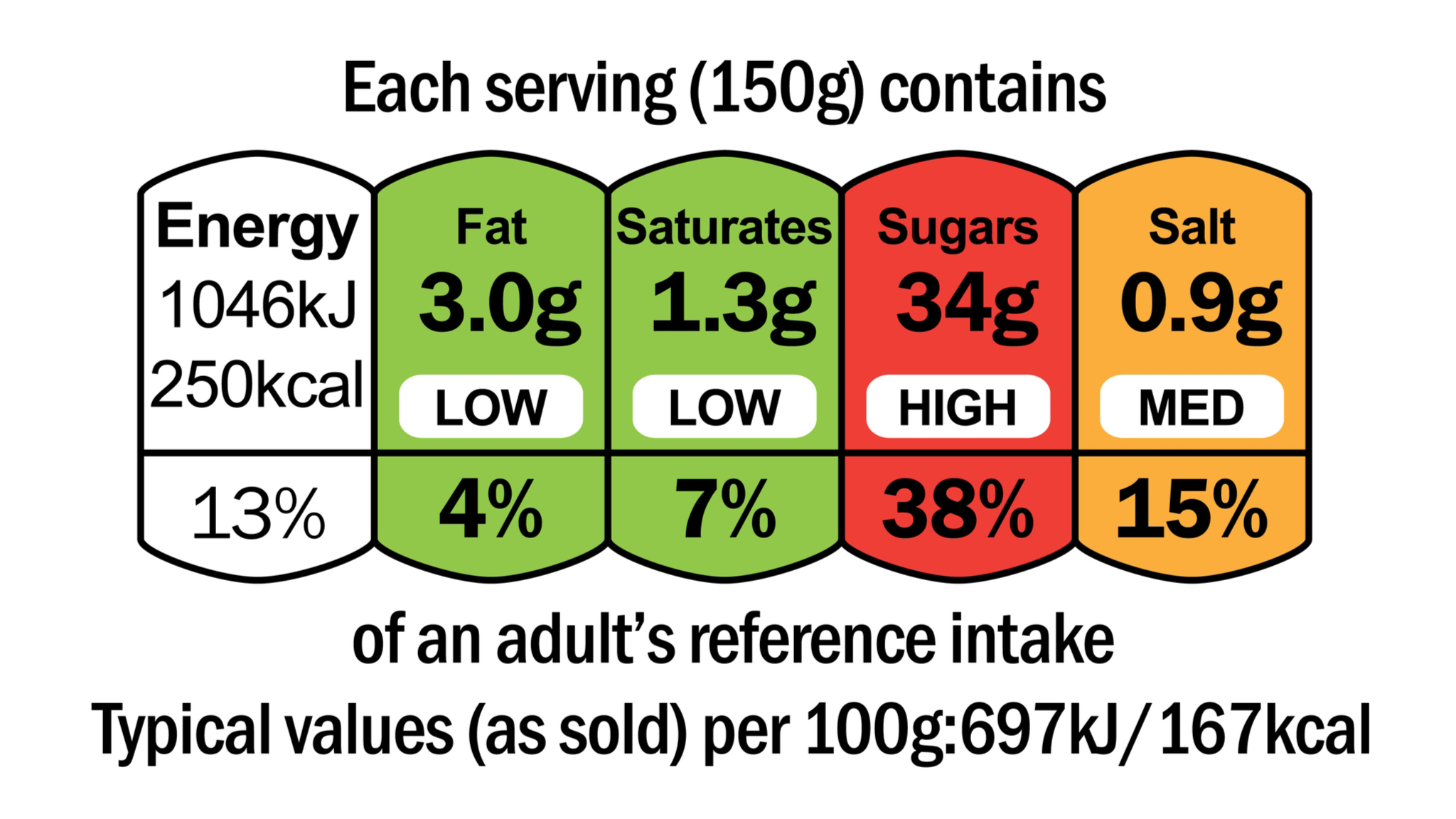

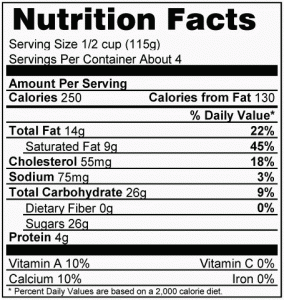





Post a Comment for "38 how to read fats on food labels"